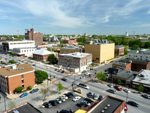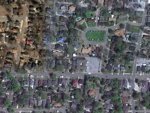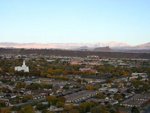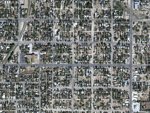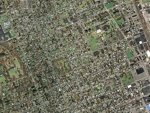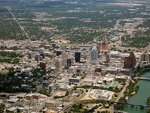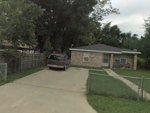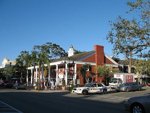The 15 Worst Housing Markets for the Next Five Years
Home prices across the nation are down 33.3 percent since they peaked in the first quarter of 2006, according to latest data from Fiserv Case-Shiller. But home prices are projected to increase 3.9 percent between now and the first quarter of 2017.
Yesterday we put together a list of the 15 best housing markets for the next five years. We're following this up with a feature on the 15 housing markets that are projected to see the most declines or slowest growth in home prices.
Note: The median family income and home price data is for Q1 2012. Unemployment data is for May 2012, and population data is for 2011.
1. Atlantic City-Hammonton, New Jersey
Annualized expected growth from 2012 - 2017: 1.2 percent
The Atlantic City-Hammonton metro area has a median home price of $193,000, above the national median of $159,000. And its home prices are 35.3 percent lower than they were during their peak in the second quarter of 2006.
It has a population of 274,338, an unemployment rate of 12.6 percent, much higher than the national average of 8.2 percent, and a median family income of $64,200 above the national median of $62,900.
2. Columbia, Missouri
Annualized expected growth from 2012 - 2017: 1.2 percent
Columbia has a median home price of $145,000 and its home prices are down 0.5 percent since their Q1 2008 peak.
It has a population of 175,831, an unemployment rate of 5.1 percent, and a median family income of $63,900.
3. Shreveport-Bossier City, Louisiana
Annualized expected growth from 2012 - 2017: 1.1 percent
Shreveport-Bossier City has a median home price of $151,000 and the metro's home prices area down 0.9 percent since they peaked in Q3 2010.
It has a population of 403,595, an unemployment rate of 7.2 percent, and a median family income of $54,900.
4. Gadsden, Alabama
Annualized expected growth from 2012 - 2017: 1.1 percent
Gadsden's home prices have declined 1.9 percent since their Q1 2009 peak.
The metro has a population of 104,303, an unemployment rate of 7.4 percent and a median family income of $41,100.
5. St. George, Utah
Annualized expected growth from 2012 - 2017: 1.1 percent
St. George's metro prices have fallen 37.1 percent since their Q4 2006 peak. It has a population of 141,666, an unemployment rate of 7.7 percent and a median family income of $55,400.
6. San Angelo, Texas
Annualized expected growth from 2012 - 2017: 1.1 percent
San Angelo has a population of 113,443, a relatively low unemployment rate of 5.3 percent and a median family income of $55,000.
7. Elmira, New York
Annualized expected growth from 2012 - 2017: 1.0 percent
Elmira has a population of 88,840, an unemployment rate of 8.8 percent and a median family income of $58,000, below the national median of $62,900.
8. Austin-Round Rock-San Marcos, Texas
Annualized expected growth from 2012 - 2017: 1.0 percent
Home prices in the Austin-Round Rock-San Marcos area have fallen 1.5 percent since the first quarter of 2009. It also has a median home price of $193,000.
The metro has a population of 1.8 million, a relatively low unemployment rate of 5.9 percent, and a median family income of $72,800.
9. Amarillo, Texas
Annualized expected growth from 2012 - 2017: 0.9 percent
Amarillo has a median home price of $127,000 and a median family income of $62,200. It also has a population of 253,823, an unemployment rate of 4.9 percent.
10. Phoenix-Mesa-Glendale, Arizona
Annualized expected growth from 2012 - 2017: 0.9 percent
The Phoenix-Mesa-Glendale metro area has a median home price of $144,000 and home prices are 52.7 percent off their Q2 2006 peak.
It also has a population of 4.26 million, an unemployment rate of 7.2 percent a median family income of $59,400.
11. Ithaca, New York
Annualized expected growth from 2012 - 2017: 0.8 percent
Home prices in Ithaca are 0.5 percent lower than their Q4 2009 peak. It has a population of 101,723, an unemployment rate of 6.5 percent and a median family income of $80,900.
12. Crestview-Fort Walton Beach-Destin, Florida
Annualized expected growth from 2012 - 2017: 0.7 percent
Home prices in the Crestview-Fort Walton Beach-Destin metro area have declined 36.2 percent since their Q4 2005 peak, and it has a median home price of $180,000.
It has a population of 183,482, an unemployment rate of 6.1 percent, and a family income $62,400.
13. Naples-Marco Island, Florida
Annualized expected growth from 2012 - 2017: 0.6 percent
Naples-Marco Island home prices are down 51.8 percent since their Q1 2006 peak.
The metro has a population of 328,134, an unemployment rate of 8.3 percent, median home price of $257,000 and a median family income of $64,000.
14. Fort Lauderdale-Pompano Beach-Deerfield Beach, Florida
Annualized expected growth from 2012 - 2017: 0.4 percent
Home prices in the Fort Lauderdale-Pompano Beach-Deerfield Beach metro area have fallen 47.4 percent since their Q2 2006 peak.
It has a median home price of $196,000, a population of about 1.8 million, and an unemployment rate of 7.3 percent.
15. Miami-Miami Beach-Kendall, Florida
Annualized expected growth from 2012 - 2017: -1.0 percent
Miami-Miami Beach-Kendall home prices are 51.4 percent off their Q1 2007 peak, and the metro has a median home price of $187,000.
But it has a population of 2.5 million people, an unemployment rate of 9.6 percent and a median family income of $47,700 below the national median.

